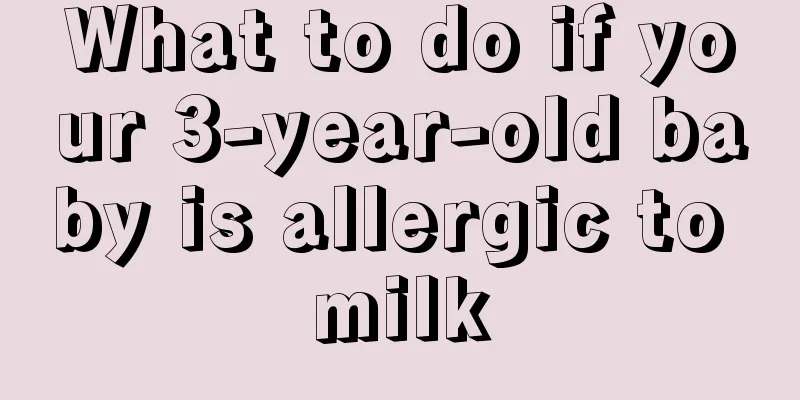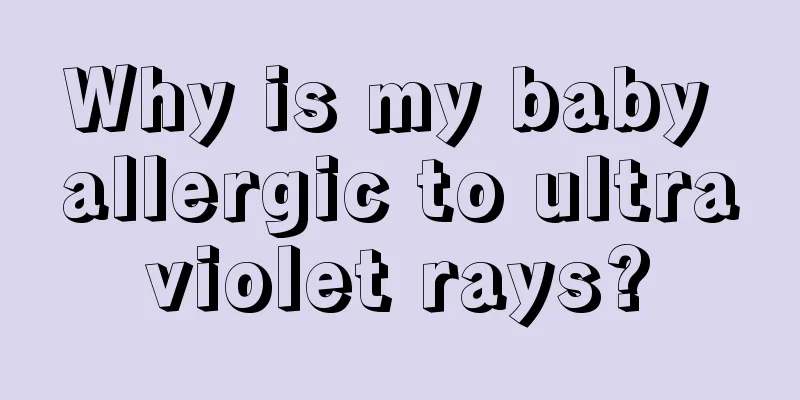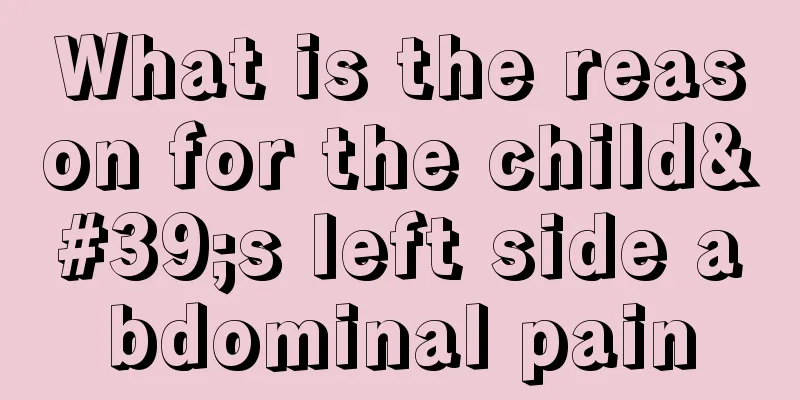The child has repeated fever and blisters at the mouth

|
Children have poor body resistance and are prone to various problems. One of the more typical problems is mouth blisters. Parents will definitely be very worried if their children have repeated fevers and blisters at the mouth. In fact, it is very likely caused by oral herpes. You can learn about the characteristics of this disease in detail and make a comprehensive judgment based on the child's physical condition. Let’s take a closer look at oral herpes. Clinical manifestations of oral herpes 1. Oral herpes simplex (1) Primary herpetic stomatitis is caused by HSV-1 and often manifests as acute herpetic gingivostomatitis. It is more common in children under 6 years old, especially between 6 months and 2 years old. Adults can also get the disease. There are four stages of disease onset: ① Prodromal stage, before the onset of the disease, there is often a history of contact with herpes patients. After an incubation period of 4 to 7 days, acute symptoms appear, such as fever, headache, fatigue, muscle pain all over the body, sore throat, etc., and the submandibular and cervical lymph nodes are swollen and tender. The child drools, refuses to eat, and becomes irritable. After 1 to 2 days, the oral mucosa, attached gingiva and marginal gingiva become extensively congested and edematous. ② During the blister stage, the oral mucosa presents clusters of small blisters, the size of a needle tip, with thin, transparent walls that are easily ruptured, forming superficial ulcers. ③ During the erosion stage, clusters of small blisters may rupture and cause large-area erosion, and may also cause secondary infection. Covered with yellow pseudomembrane. Similar lesions may also occur on the lips and skin around the mouth, with blisters breaking and forming scabs. ④ During the healing period, the erosion surface gradually shrinks and heals. The whole course of the disease takes 7 to 10 days. (2) Recurrent herpetic stomatitis: After the primary herpes infection heals, recurrent lesions occur. The site of recurrent infection is near the lips, also known as recurrent herpes labialis. Its clinical manifestations are: the lesions always begin with multiple clustered blisters. When the lesion recurs, it is always at or near the location of the original attack. There are prodromal symptoms, and the patient may feel mild fatigue and discomfort, and soon there will be itching, increased tension, burning pain, tingling and other symptoms in the area where the recurrent damage is about to occur. Within a few hours, blisters appear, surrounded by mild erythema. Generally, blisters can last less than 24 hours, followed by rupture, erosion, and scab formation. The course of the disease is about 10 days, but secondary infection often delays healing. No scars are left after healing, but pigmentation may be present. Factors that induce recurrence include local mechanical stimulation, colds, sunlight exposure, etc. Emotional factors can also induce recurrence. Although recurrent herpes labialis is the most common form of recurrence of the disease, a small number of recurrences can damage the gums and hard palate. 2. Oral herpes zoster Oral mucosal lesions: They are prone to occur in the distribution area of the trigeminal nerve. The blisters are short-lived and often manifest as shallow ulcers with irregular edges and covered with yellow pseudomembranes. They are limited to one side and cause severe toothache. The area where the rash is about to break out will first feel pain, itching, and burning, followed by flushing, and clusters of millet-sized papules will appear. They are arranged in bands along the affected nerves and quickly turn into blisters. The blisters can merge into large bullae. The blister walls are tense and the contents are clear and transparent, gradually becoming turbid and even bloody and purulent. After a few days, the blisters are absorbed and dried up, and the scabs fall off after 1 to 2 weeks, leaving temporary erythema or pigmentation. Generally no scars are left and the damage does not exceed the midline. 3. Hand, foot and mouth disease The disease starts acutely, with fever, maculopapular rashes and blisters on the palms or soles of the feet, and rashes on the buttocks or knees. There is an inflammatory red halo around the rash, and less fluid in the blisters. Scattered blisters appear on the oral mucosa, with obvious pain. Some children may also have symptoms such as cough, runny nose, loss of appetite, nausea, vomiting and headache. Severe cases: patients with clinical manifestations of hand, foot and mouth disease, accompanied by myoclonus or encephalitis, acute flaccid paralysis, cardiopulmonary failure, pulmonary edema, etc. Infants and young children in areas where hand, foot and mouth disease is prevalent do not have typical symptoms of hand, foot and mouth disease. However, there is fever accompanied by myoclonus or encephalitis acute flaccid paralysis, cardiopulmonary failure, pulmonary edema, etc. |
<<: Blisters on the child's body
Recommend
Symptoms of intrauterine pneumonia in infants
When taking care of their babies, new mothers mus...
Why does my 4-month-old baby not want breast milk?
We all know that after a baby is born, drinking b...
What to do if your child is deaf?
We know that almost every parent in the world act...
How to teach children to bend down
Bending back is a basic movement in dance and it ...
What happens if my child suddenly has stomach pain?
Nowadays, many families have only one child, and ...
Children cough with white tongue coating
The color and shape of the tongue can reveal a pe...
What is the disease when the baby has a fever and convulsions?
Before I became a parent, I didn’t know how to ra...
Children's nutritious meal recipes
Children's nutrition has always been a focus ...
Why does a child's nose bleed when it is touched?
Some children are born with weaker constitutions,...
What’s wrong with my child’s swollen neck?
Young children have relatively weak body resistan...
Development indicators of infants in April
As parents, when our children become unwell, we a...
The reason why baby's nose is yellow
A baby's yellow nose is a very common disease...
How to make pumpkin porridge for children?
Pumpkin is a common food in our daily life. Since...
What to do if your child has a stuffy nose when sleeping at night
Autumn is a time when the weather is relatively d...
What is the cause of diarrhea in children with roseola?
Diarrhea in children is a very common problem in ...









